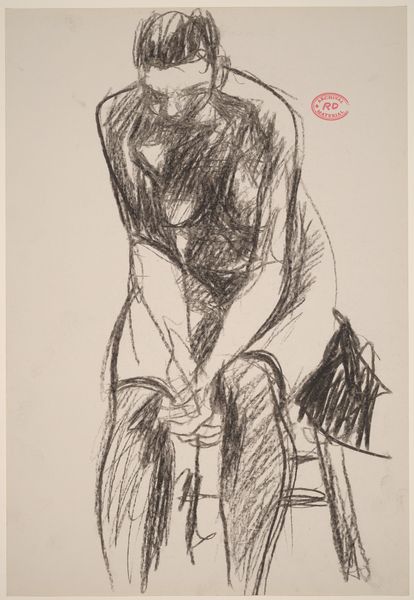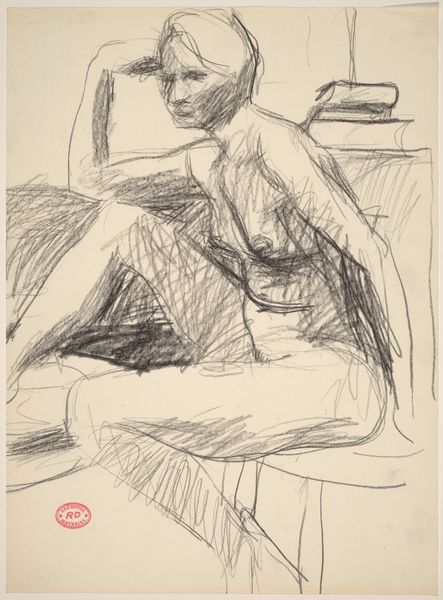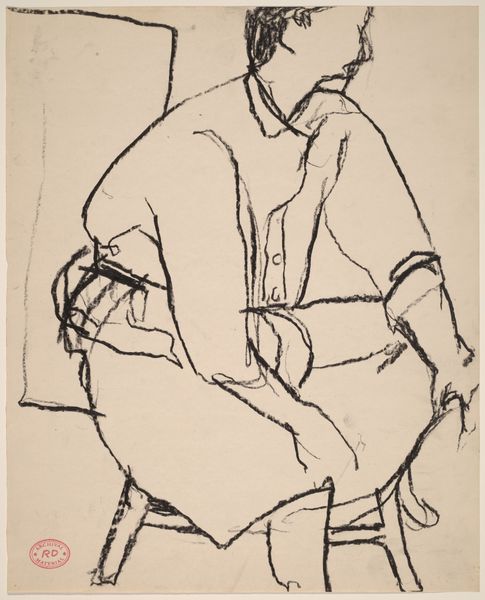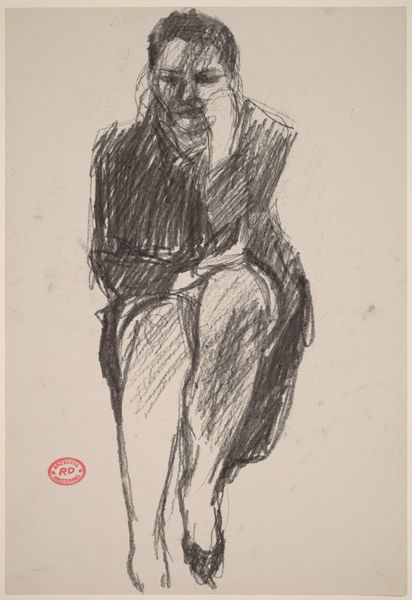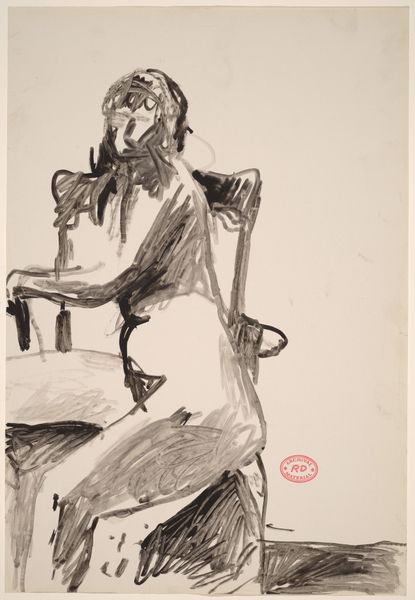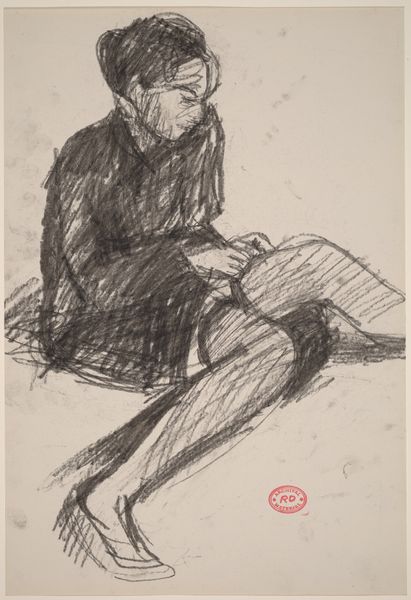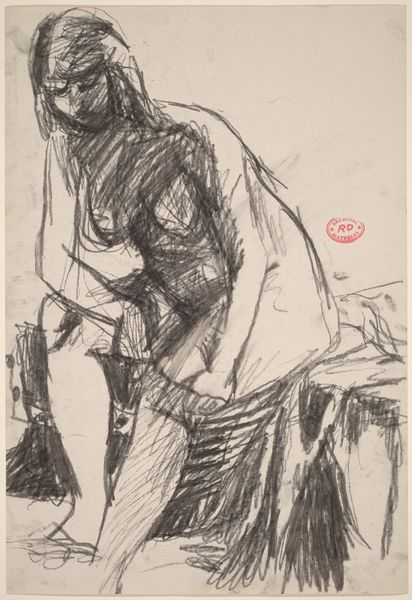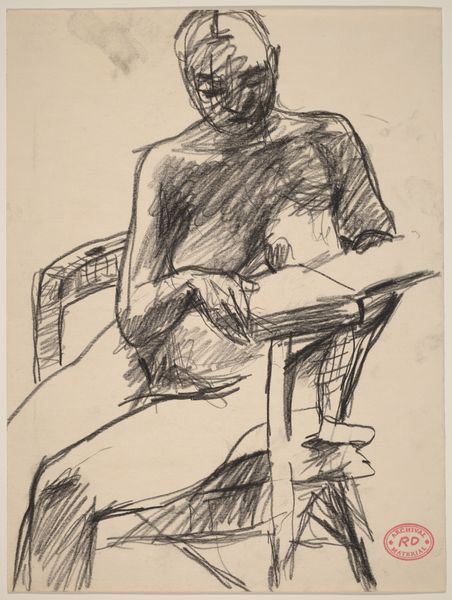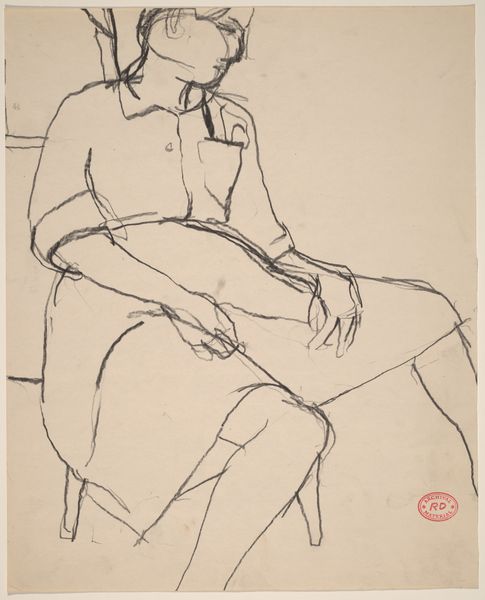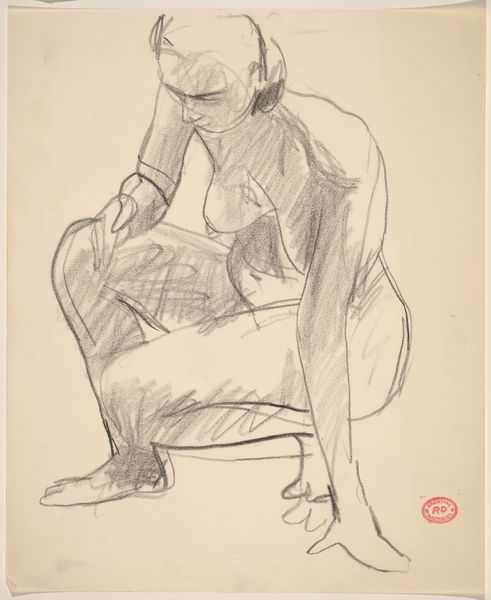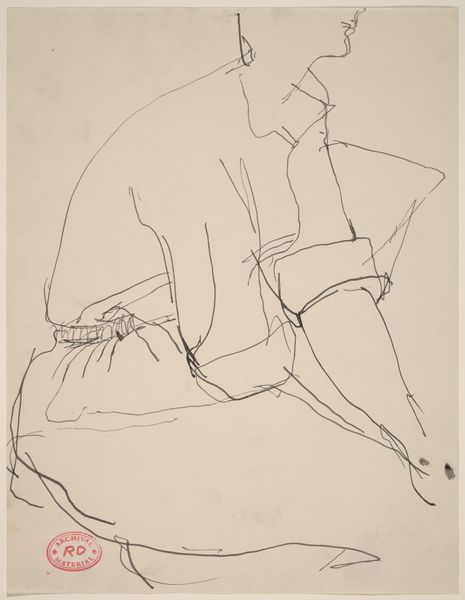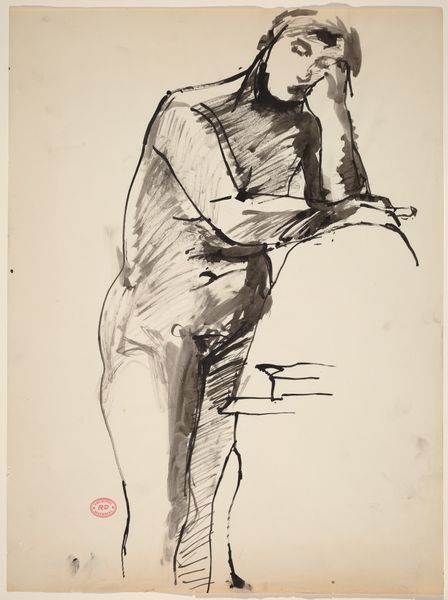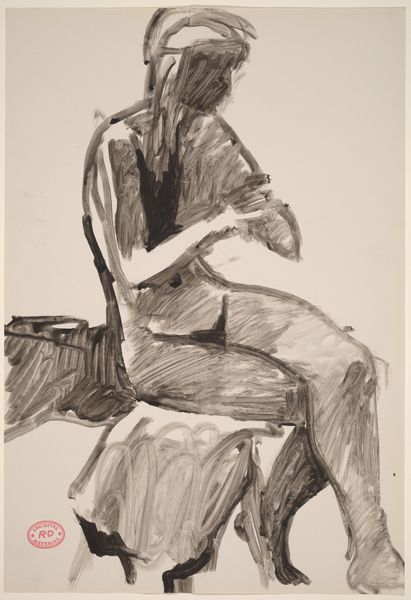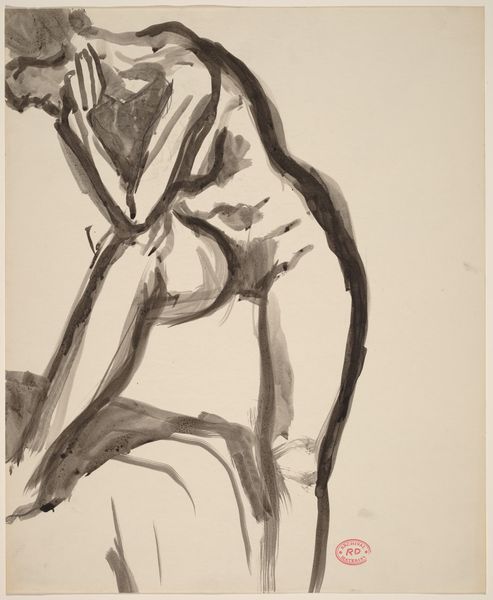![Untitled [seated woman with book in her lap] by Richard Diebenkorn](/_next/image?url=https%3A%2F%2Fd2w8kbdekdi1gv.cloudfront.net%2FeyJidWNrZXQiOiAiYXJ0ZXJhLWltYWdlcy1idWNrZXQiLCAia2V5IjogImFydHdvcmtzLzVjNzIwMDA5LTlmYzItNDM5MC1hZTc0LWZjNGJjZDc2ZDljOS81YzcyMDAwOS05ZmMyLTQzOTAtYWU3NC1mYzRiY2Q3NmQ5YzlfZnVsbC5qcGciLCAiZWRpdHMiOiB7InJlc2l6ZSI6IHsid2lkdGgiOiAxOTIwLCAiaGVpZ2h0IjogMTkyMCwgImZpdCI6ICJpbnNpZGUifX19&w=3840&q=75)
drawing, charcoal
#
portrait
#
drawing
#
figuration
#
bay-area-figurative-movement
#
charcoal
#
modernism
Dimensions: overall: 43.2 x 27.7 cm (17 x 10 7/8 in.)
Copyright: National Gallery of Art: CC0 1.0
Curator: Looking at Richard Diebenkorn's "Untitled [seated woman with book in her lap]" from the mid-1950s to late 60s, rendered in charcoal, one immediately senses a quiet intimacy. What's your first impression? Editor: Brooding. There’s a somber quality, almost like the weight of the world is resting on this woman’s shoulders as she's enveloped by the chair, which looks uncomfortable, even rigid. What do we know about the socio-political influences around Diebenkorn at this time? Curator: Diebenkorn was grappling with the legacy of abstract expressionism, moving towards figuration during the height of the Civil Rights Movement and growing social unrest. His shift back to depicting the human form was arguably a reflection of a broader need to engage with the world directly. Consider the positioning, even, of this sitter, perhaps a kind of domestic commentary given gendered expectations of women. Editor: Absolutely. And, as the drawing was executed between 1955-1967, what was the role of women within institutions at this time? The woman’s posture—hunched slightly, her face obscured—it speaks to an attempt to understand power relations. Do we have any information about Diebenkorn's motivations, any written commentary from him about his figures? Curator: Documentation indicates he focused intently on capturing the psychological depth of his sitters, and less on overt narratives. But your point stands, his shift from abstraction can be read through a political lens—perhaps unconsciously processing his relationship to socio-political change as a white man embedded in predominantly white institutions. Editor: It makes one wonder about the conditions surrounding the artwork’s production and the cultural narratives informing both Diebenkorn's choices as well as how the work would be received by institutions, like museums, but also the audience. What purpose might he believe this figure would fulfill for a viewing public? Is she a symbol of perseverance? Curator: Possibly. By reducing the figure to these simple contours of a solitary woman engrossed in literature, he asks us to question what the domestic and academic realms can, and cannot, offer. In its starkness, this untitled drawing offers the gift of questions, I find. Editor: And prompts introspection, to see where such inquiries take us in understanding history, theory, and identity, even in its very rawness. Thank you.
Comments
No comments
Be the first to comment and join the conversation on the ultimate creative platform.
